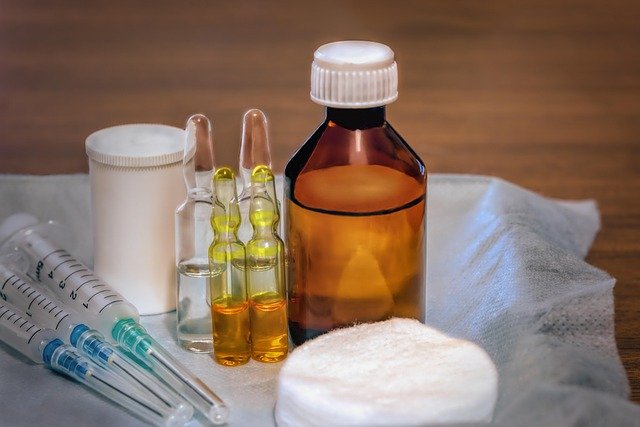Exploring the Latest Injectable Options for COPD
COPD care is evolving, and new injectable options are offering fresh approaches for patients. From breathing-focused COPD shots to newly approved injectables like Dupixent, there are multiple treatments to know. Explore how these injection treatments fit into COPD management today.

What are the newest injectable COPD medications?
Recent developments in COPD treatment have introduced several injectable medications that target specific aspects of the disease. One of the most promising new treatments is Dupixent (dupilumab), which was approved by the FDA in 2023 for use in COPD patients with type 2 inflammation. Dupixent works by blocking certain proteins involved in airway inflammation, potentially reducing exacerbations and improving lung function.
Another injectable medication gaining attention is Nucala (mepolizumab), which is currently being studied for its potential benefits in COPD patients with eosinophilic inflammation. While not yet approved specifically for COPD, Nucala has shown promise in reducing exacerbations in clinical trials.
How do COPD shots provide breathing support?
Injectable COPD treatments often work by targeting the underlying inflammation and immune responses that contribute to airway obstruction. These medications can help relax and open the airways, making it easier for patients to breathe. Some injectable options, such as long-acting bronchodilators, provide extended relief from symptoms like shortness of breath and wheezing.
In addition to symptom relief, certain injectable treatments may help reduce the frequency and severity of COPD exacerbations. By modulating the immune system and reducing inflammation, these medications can potentially slow disease progression and improve overall lung function.
What vaccines are recommended for COPD patients?
Preventive shots play a crucial role in managing COPD by reducing the risk of respiratory infections that can exacerbate symptoms. The Centers for Disease Control and Prevention (CDC) recommends the following vaccine schedule for COPD patients:
-
Influenza vaccine: Annually
-
Pneumococcal vaccines: PPSV23 and PCV13 or PCV20, as recommended by healthcare providers
-
COVID-19 vaccine: Initial series and boosters as recommended
-
Tdap (Tetanus, Diphtheria, Pertussis) vaccine: Once, with Td boosters every 10 years
These vaccines help protect COPD patients from infections that can be particularly dangerous for those with compromised lung function.
What are key considerations for COPD injection treatments?
When exploring injectable options for COPD, patients and healthcare providers should consider several factors:
-
Personalized approach: Treatment plans should be tailored to each patient’s specific COPD phenotype, severity, and comorbidities.
-
Potential side effects: As with any medication, injectable COPD treatments may have side effects. These can range from mild injection site reactions to more serious allergic responses.
-
Administration frequency: Some injectable treatments require weekly or monthly doses, while others may be administered less frequently. This can impact patient adherence and overall treatment effectiveness.
-
Cost and insurance coverage: Injectable medications can be expensive, and coverage may vary depending on insurance plans. Patients should discuss financial considerations with their healthcare providers and explore potential assistance programs.
-
Combination with other treatments: Injectable options are often used in conjunction with other COPD management strategies, such as inhaled medications, pulmonary rehabilitation, and lifestyle changes.
How do new COPD injectables compare to traditional treatments?
When considering new injectable options for COPD, it’s important to understand how they compare to traditional treatments in terms of efficacy, administration, and cost. The following table provides an overview of some key COPD treatments:
| Treatment | Type | Administration | Frequency | Estimated Monthly Cost |
|---|---|---|---|---|
| Dupixent | Injectable biologic | Subcutaneous injection | Every 2 weeks | $3,000 - $3,500 |
| Nucala | Injectable biologic | Subcutaneous injection | Every 4 weeks | $2,500 - $3,000 |
| Spiriva | Inhaled medication | Inhaler | Daily | $400 - $500 |
| Advair | Inhaled combination medication | Inhaler | Twice daily | $300 - $400 |
| Prednisone | Oral corticosteroid | Tablet | As prescribed | $10 - $50 |
Prices, rates, or cost estimates mentioned in this article are based on the latest available information but may change over time. Independent research is advised before making financial decisions.
While injectable biologics like Dupixent and Nucala tend to be more expensive than traditional inhaled medications, they may offer benefits for certain COPD patients, particularly those with specific inflammatory profiles or who have not responded well to other treatments. The choice of treatment should be made in consultation with a healthcare provider, taking into account the patient’s individual needs, disease characteristics, and overall health status.
In conclusion, the landscape of COPD treatment is evolving with the introduction of new injectable options. These medications offer new hope for patients struggling with symptom management and frequent exacerbations. However, they should be considered as part of a comprehensive treatment plan that includes preventive measures, lifestyle modifications, and ongoing medical supervision. As research continues, we can expect further advancements in injectable therapies for COPD, potentially improving outcomes and quality of life for those affected by this challenging condition.
This article is for informational purposes only and should not be considered medical advice. Please consult a qualified healthcare professional for personalized guidance and treatment.




